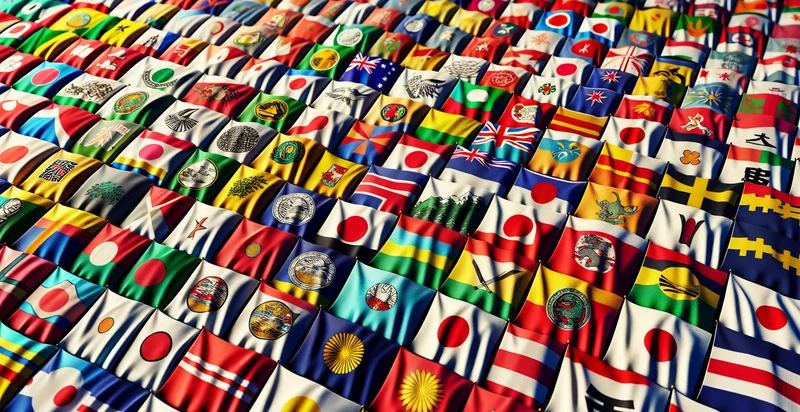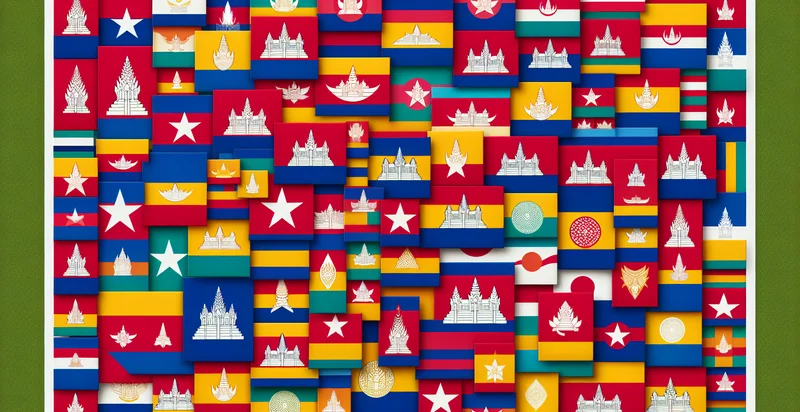Identify japanese prefecture flags
using AI
Below is a free classifier to identify japanese prefecture flags. Just upload your image, and our AI will predict which Japanese prefecture flag it is - in just seconds.

Contact us for API access
Or, use Nyckel to build highly-accurate custom classifiers in just minutes. No PhD required.
Get started
import nyckel
credentials = nyckel.Credentials("YOUR_CLIENT_ID", "YOUR_CLIENT_SECRET")
nyckel.invoke("japanese-prefecture-flags-identifier", "your_image_url", credentials)
fetch('https://www.nyckel.com/v1/functions/japanese-prefecture-flags-identifier/invoke', {
method: 'POST',
headers: {
'Authorization': 'Bearer ' + 'YOUR_BEARER_TOKEN',
'Content-Type': 'application/json',
},
body: JSON.stringify(
{"data": "your_image_url"}
)
})
.then(response => response.json())
.then(data => console.log(data));
curl -X POST \
-H "Content-Type: application/json" \
-H "Authorization: Bearer YOUR_BEARER_TOKEN" \
-d '{"data": "your_image_url"}' \
https://www.nyckel.com/v1/functions/japanese-prefecture-flags-identifier/invoke
How this classifier works
To start, upload your image. Our AI tool will then predict which Japanese prefecture flag it is.
This pretrained image model uses a Nyckel-created dataset and has 37 labels, including Aichi, Akita, Aomori, Chiba, Ehime, Fukuoka, Fukushima, Gifu, Hiroshima and Hokkaido.
We'll also show a confidence score (the higher the number, the more confident the AI model is around which Japanese prefecture flag it is).
Whether you're just curious or building japanese prefecture flags detection into your application, we hope our classifier proves helpful.
Related Classifiers
Need to identify japanese prefecture flags at scale?
Get API or Zapier access to this classifier for free. It's perfect for:
- Cultural Heritage Preservation: This function can aid museums and cultural institutions in Japan to catalog and maintain their collections of prefecture flags. By accurately classifying flags, institutions can enhance their exhibitions, educational programs, and archival research, promoting awareness of regional identities and heritage.
- Educational Tools for Schools: Schools can use this flag identifier as a learning resource to teach students about Japanese geography and culture. By incorporating interactive flag identification into curricula, educators can engage students in understanding the significance of each prefecture and its respective emblem.
- Tourism Promotion: Tourism boards can implement this classification function to boost regional tourism by producing engaging content that highlights each prefecture's flag and symbol. By accurately presenting flags in promotional material, tourism initiatives can foster a deeper appreciation for Japan’s diverse regions among visitors.
- Event Identification in Sports: Sports organizations can utilize the identifier to categorize flags during competitions, ensuring correct representation of teams from different prefectures. This is crucial for maintaining integrity in presentations and fostering regional pride during national events.
- Social Media Engagement: Businesses focused on Japan-related products or services can use the identifier to create engaging social media campaigns featuring prefecture flags. By showcasing these images with accurate classification, brands can foster a strong connection with their audience and provide culturally relevant content.
- Game Development: Video game developers, especially those focusing on educational or cultural games, can integrate this flag identifier to enhance realism and cultural representation. Players can learn about Japanese prefectures while interacting with the flags in a visually engaging manner, enriching their gaming experience.
- Authenticity Verification in Merchandise: Retailers selling souvenirs or Japan-themed products can use the identifier to ensure the accuracy of prefecture flag representations in their merchandise. This ensures that consumers receive authentic items that reflect the true cultural symbols of Japan, enhancing customer satisfaction and trust.


